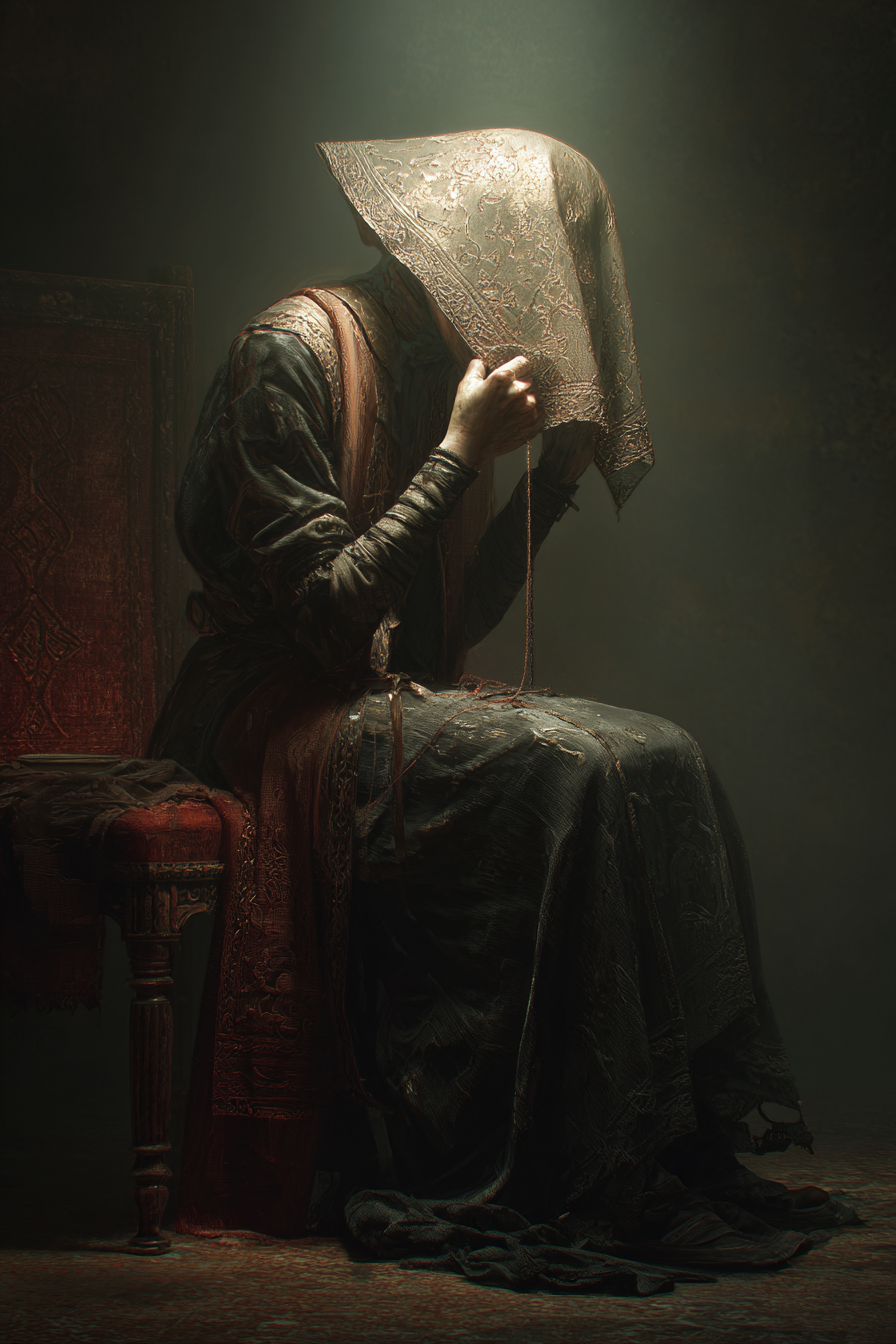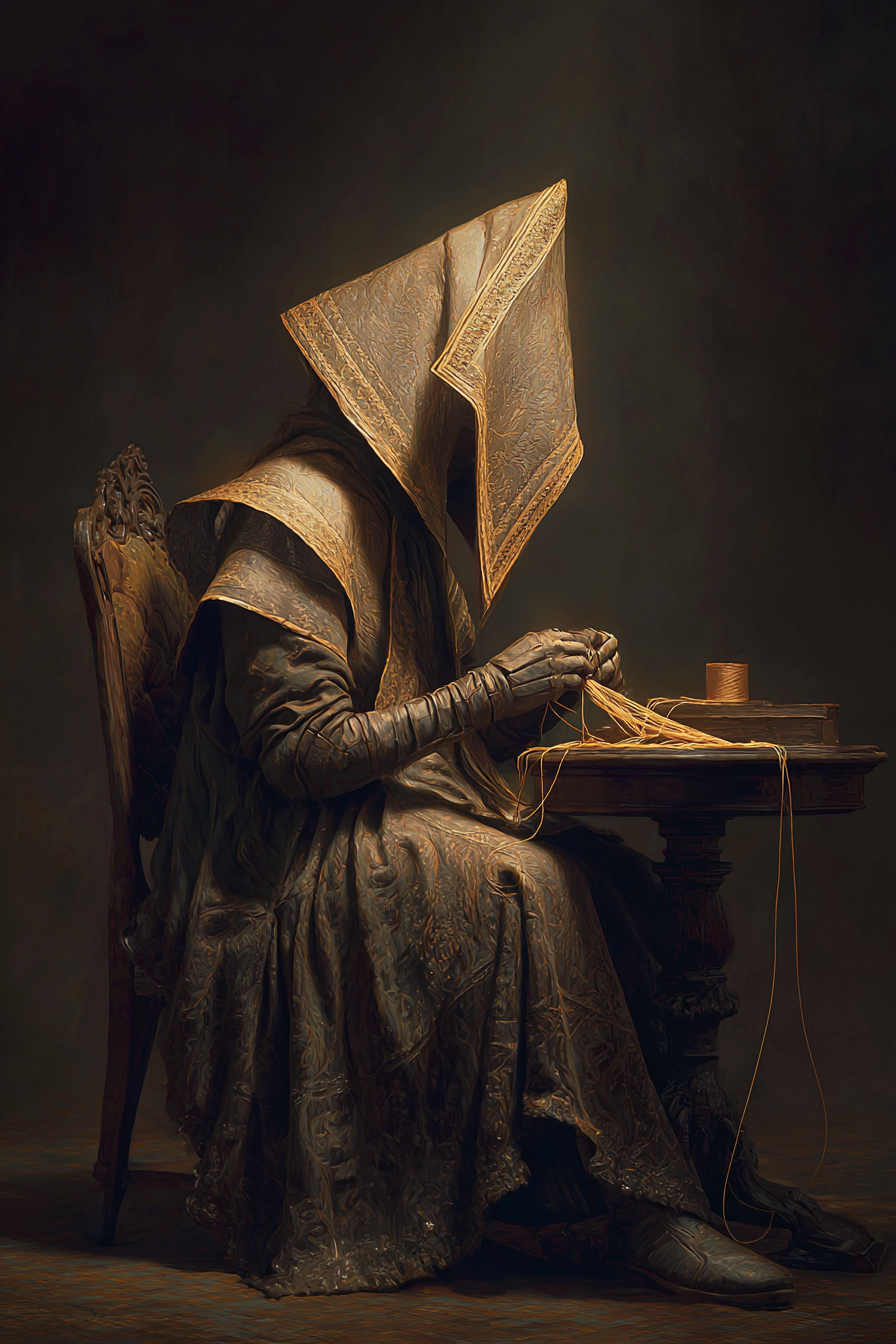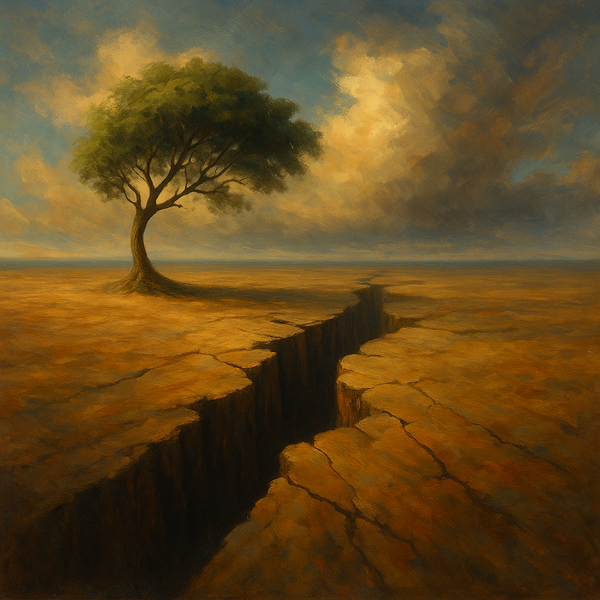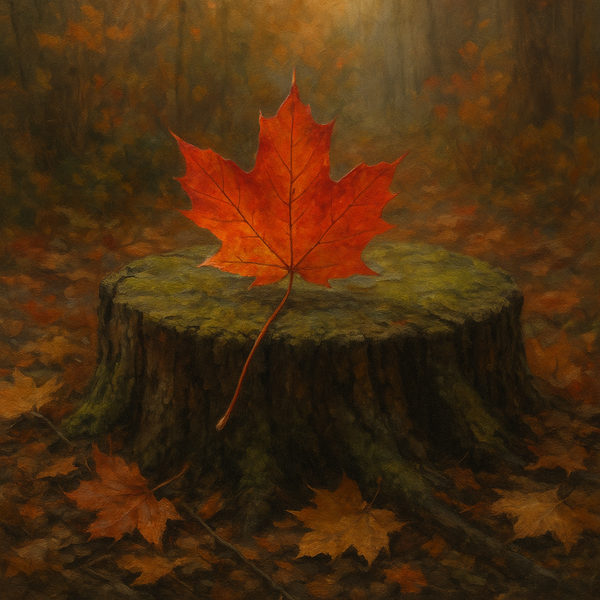The Veil-Stitchers
On masks, silence, and the saints who sew us into being

In the half-light, they sit hooded, faceless, and unmoving except for the quiet rhythm of their hands. The needles rise and fall, drawing thread through fabric that is not fabric at all. The air is filled with the faint tension of something stretched just a little bit too tightly. It is the sound of veils being born.
The Veil-Stitchers never speak. Their silence is part of their craft, and the cloth they work with is spun from silence itself. You can feel that silence as you approach. It is the hush that thickens until your breath feels intrusive and even your own heartbeat sounds too loud. The only sound truly welcome here is the incessant, methodical pull of thread.
Who Are They?
No one quite agrees on where they came from. Some say they are saints who gave up their faces so that no one could worship them. Others say they were queens and kings who refused their crowns, condemned to stitch veils forever in penance. A few whisper they are simply the shadows of every mask we have ever worn, gathering together while sewing themselves into being.
What they stitch is really a covering more than it is clothing, and it is distance more than it is cloth. The Veil-Stitchers weave thresholds, barriers that separate seen from unseen, truth from myth, voice from silence.
Every stitch is a prayer that unravels as it is spoken. The hood remembers what the tongue dares not say. - The Hollow Gospels: The Veil of Hymns
Why They Haunt Me
I think I've been thinking about figures like these so much lately because October is here, and that's already a veiling month.
The days shorten, the nights lengthen, and everything feels just a little bit more haunted around the edges. However, it's likely also because I know what it means to sew myself smaller, stitch myself quieter, and patch together a face that doesn’t quite fit but passes well enough that nobody else really notices.
As a child, it never occurred to me to veil myself. I thought I was normal, maybe even dazzling in my strangeness on the right days. It wasn’t until the world insisted I was “too much,” “too weird,” and “too blunt” that I learned to reach for that now-familiar thread and needle. The first veil I ever stitched was behavior, the better to make myself acceptable to those around me so they'd go find something to do and leave me to myself.
The Veil-Stitchers remind me of that constant work — the way neurodivergent folks like me mask and camouflage, as well as the way society rewards the stitched version of ourselves more than it ever will the raw, uncut cloth.
The road is hidden in the hem. To unravel it is to leave, though you may never arrive. - The Book of Exits: The Seam of Departure
Writing as Veil-Making
I suppose writing (especially the creative, poetic kind) is its own kind of stitching — threading thought into language and sewing silence into sentences. It’s both revealing and concealing. Everything I might decide to say exposes me, but I take care to leave myself some places to hide, so that no one ever gets the whole of me.
The Veil-Stitchers hover always at the edge of the page, guiding the needle. Sometimes they're helpful, and sometimes not so much. However, they always remind me that to create anything is to veil part of yourself so that another part can shine through.
She sits because the vow was broken. Her thread binds her tighter than chains, and still the debt remains unpaid. - Ledger of Forgotten Debts: The Chair of Oaths

The Stitchers as Saints
Sometimes I wonder whether the Veil-Stitchers are saints in their own right, patrons of anyone who has ever had to cover parts of themselves up just to survive. Patron saints of the masked, the quiet, the camouflaged. Saints of the invisible bruise.
If that’s true, then their relics wouldn't be crowns or swords but scraps of cloth, torn veils that still hum with silence. They may even be compassionate or even protective in their endless work, rather than cruel. They give us the veils we need when we cannot risk being bare-faced out there in the world.
The brocade gleams like constellations, despite the absence of true stars. The pattern is a map to nowhere. - Atlas of False Heavens: The Gilded Shroud
Sitting with Them
To sit with the Veil-Stitchers is to admit how much of life is ultimately filtered through coverings — roles, expectations, and all of the masks we’re rewarded for wearing. To stitch beside them is to understand that veiling is more than hiding. It can also be art or even devotion if we allow it to be.
And maybe to stitch long enough is also to learn how to unmake. To eventually find the one seam that is also a door and step through the fabric to see what lies on the other side.
They called her holy because the mirror failed to catch her image. Her relic is the veil itself, heavy with silence. - Index of the Sainted Dead: Saint Without Reflection
Closing the Thread
I still haven't decided whether the Veil-Stitchers are truly here to protect us, punish us, or simply remind us that we are always, in some way, hidden. But I know they’re near.
I can feel them when I write and when I step outside, and the air smells like October. And they are always patient. They will finish their work whether I watch or not.





